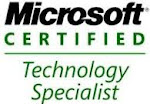Previous post, I have mentioned how to create new machine
translation service. After creating the machine translation service we can
configure the service. We can do this by using Central Administration or Power Shell commands.
By Using Central Admin, Go to Application Management ->
Manage Service Applications
Select Machine Translation Service
In the machine translation service page, “Enable File
Extensions” section, check the file types that we want to translate. If we
uncheck any of the check box that file type will disable for translation.
In “Item Size Limits” section we have three text boxes for
size limit,
- “Maximum file size of binary files in KB. Microsoft Word documents are binary files” box for Microsoft word document size. The range is between 100-524288. Default value is 51200. Files more than that size will not be translated.
- “Maximum file size of text files in KB. Plain-text, HTML, and XLIFF documents are text files” box for plain text, HTML docs, XLIFF documents. The range is between 100-15360. Default value is 5120. Files more than that size will not be translated.
- “Maximum character count for Microsoft Word document” box for word document. The range is between 10000-10000000. Default value is 500000. Files more than that size will not be translated.
“Online Translation Connection” Section will help Machine
Translation service to connect online transaction service. Default is “Use
default internet settings”. If we select “Use proxy specified”, we have to
enter proxy server name and port number. If we select “Use proxy specified”
option, we have to restart Machine translation service.
“Translation Processes” section allows us to specify the
number of transaction processes created on the each service application. This
value equals to the number of translations that process simultaneously. Default
value is “1”. If we change the value, we have to restart the service.
In “Translation Throughput” section allows us to specify the
frequency with which groups of translations are started and the number of
translations within each group. we have two text boxes,
- In “Frequency with which to start translation” text box, we have to specify the frequency that which groups of translations to be started. Range is 1-59. Default value is 15.
- In “Number of Translation to start” text box, we have to mention the number of translations per process. This specifies that the number of translation started per process every time translations are started. Range is 1-1000 and default value is 200.
“Maximum Translation Attempts”
section represents the number of times a translation tried before its status
set to fail. Range is 1-10 and default value is 2.
In “Maximum Synchronous Translation Requests”, we have to
specify the maximum number of synchronous transaction requests that processed
at a time on each server for service application. Range is between 0-300.
Default value is 10.
“Translation Quota” section limits the usage of the service
queue mode for high throughput values. We have two sections here.
- In “Maximum number of items which can be queued within 24-hour period”, No limit is the default. If we select Limit per 24 hours, we have to type the maximum of number of items that can be queued in 24-hour period. The value must be between 100-1000000.
- “Maximum number of items which can be queued within a 24-hour period per site subscription” No limit is the default. If we select Limit per 24 hours, we have to type the maximum of number of items that can be queued in 24-hour period per site subscription. The value must be between 100-1000000.
“Completed Job Expiration time” specifies the expiry time
for the completed job history. Value range is 1-1000 and default value is 7
days. We can select “No expiration” without expiry.
“Recycle Threshold” specifies the number of documents
translated by a translation process before it is restarted. Value range is
1-1000 and default value is 100. If we change this value, we have to restart
the service.
“Office 97-2003 Document Scanning” specifies whether we need
to disable security scanning for 97-2003 office documents. We have to enable
this setting only when trust the documents to be converted. Default value is “No”.
Click on “OK” to save the configurations.
By Using Power Shell script we can configure the Machine translation
service, here is the script do that,
Set-SPTranslationServiceApplication -Identity
"<Machine Translation Service Application Name>"
-EnableAllFileExtensions -UseDefaultlnternetSettings -TimerJobFrequency
<Frequency of Timer Job> -MaximumTranslationAttempts <Maximum
Translation Attempts> -JobExpirationDays <Job Expiration Days>
-MaximumSyncTranslationRequests <Maximum Sync Translation Requests>
-RecycleProcessThreshold <Recycle Process Threshold>
-DisableBinaryFileScan <Disable Binary File Scan>
Here,
“<Machine Translation Service Application Name>” -
Name of the service application,
“<Frequency of Timer Job>” - Timer job frequency
“<Maximum Translation Attempts>” – Maximum translation
attempt before showing as failure.
“<Job Expiration Days>” – days to kept the job history
in history logs
“<Maximum Sync Translation Requests>” – maximum number
of translation requests
“<Recycle Process Threshold>” – number of documents to
be converted before conversation process.
“<Disable Binary File Scan>” – set the file scan or
not.
Example:
Set-SPTranslationServiceApplication -Identity "Machine
Translation Service Application" -EnableAllFileExtensions
-UseDefaultlnternetSettings -TimerJobFrequency 30 -MaximumTranslationAttempts 3
-JobExpirationDays 14 -MaximumSyncTranslationRequests 20 -RecycleProcessThreshold
300 -DisableBinaryFileScan 1
We have to check Office Web Apps and an Internet connection on our front-end
servers are properly configured or not. Once we check that by navigating in to
documents, select and open the document using office web app.
In the info section we can “Translate” option to translate the
document.

























































